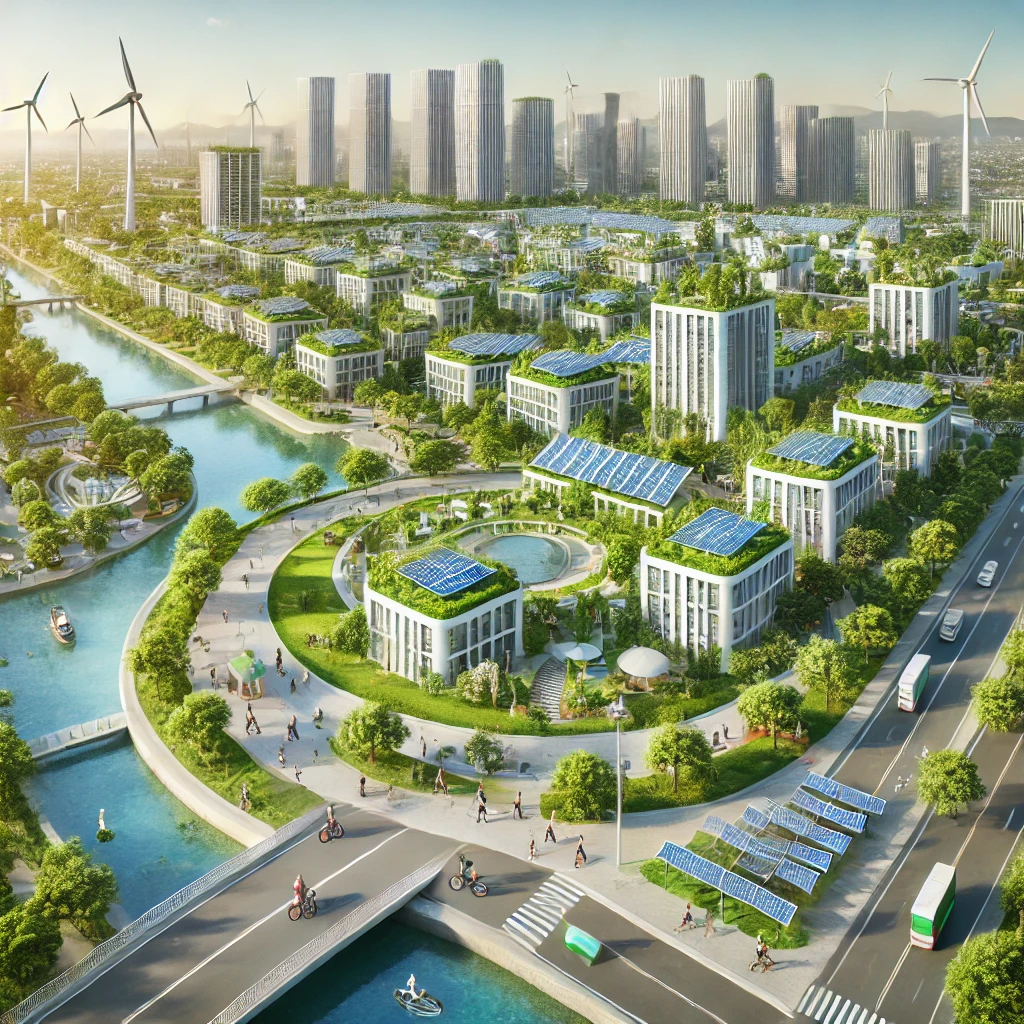As the global urgency surrounding climate change intensifies, the construction and real estate industries are taking proactive steps to reduce their environmental impact. One of the most recognized frameworks leading this movement is the Leadership in Energy and Environmental Design (LEED) certification, developed by the U.S. Green Building Council (USGBC). LEED promotes sustainable building practices and sets measurable targets for environmental performance, aiming to mitigate the effects of climate change.
What is LEED Certification?
LEED is a globally acknowledged green building rating system that provides a structured approach for the design, construction, operation, and maintenance of environmentally responsible and resource-efficient buildings. It addresses energy efficiency, water conservation, sustainable material use, optimal site selection, and indoor environmental quality. By awarding points across various sustainability criteria, LEED certification levels—Certified, Silver, Gold, and Platinum—help measure a building’s overall sustainability performance.
The Role of LEED in Combating Climate Change
LEED certification actively supports climate action by setting standards that reduce carbon emissions, minimize resource consumption, and foster energy-efficient practices. The framework targets various climate-focused strategies:
Reducing Carbon Emissions
- Encourages the use of renewable energy sources, such as solar and wind power.
- Implements energy-efficient systems that lower greenhouse gas emissions.
Improving Energy Performance
- Sets stringent energy efficiency benchmarks.
- Promotes advanced building energy management systems to monitor and reduce energy use.
Water Conservation
- Reduces the strain on local water resources through low-flow fixtures, water reuse systems, and efficient irrigation practices.
Sustainable Material Use
- Incentivizes the use of recycled, locally sourced, and low-impact materials.
- Encourages the adoption of circular economy principles to minimize waste.
Resilience and Adaptation
- Fosters climate resilience by encouraging buildings to withstand climate-related stresses like heatwaves, storms, and flooding.
Enhancing LEED’s Effectiveness Against Climate Change
While LEED has made significant strides in promoting sustainability, there are several ways it can be more impactful in addressing climate change:
Stricter Energy Performance Standards
- Regularly updating energy performance benchmarks in line with evolving climate science and international agreements like the Paris Accord.
Carbon Accounting Requirements
- Introducing mandatory carbon footprint calculations and requiring buildings to demonstrate measurable reductions in emissions.
Increased Focus on Net-Zero Buildings
- Providing additional incentives for buildings that aim for net-zero energy, water, and carbon performance.
Enhanced Climate Resilience Credits
- Expanding credits for resilience strategies, including flood mitigation, heat resistance, and disaster preparedness.
Promoting Renewable Energy Integration
- Offering more points for projects that fully or partially rely on renewable energy systems.
LEED v4.1 and Future Climate Initiatives
The transition from LEED v4 to LEED v4.1 introduced flexibility and updated metrics for energy efficiency and material transparency, making it easier for projects to adapt to sustainability goals. Future versions of LEED are expected to place an even greater emphasis on climate action by integrating more rigorous emissions reduction requirements, embodied carbon tracking, and enhanced renewable energy incentives.
LEED Certification Process for Climate Action
To effectively combat climate change through LEED certification, projects must:
Select the Appropriate Rating System
- Choose between Building Design + Construction (BD+C), Interior Design + Construction (ID+C), or Existing Buildings: Operations & Maintenance (O+M) based on project type.
Meet Minimum Program Requirements (MPRs)
- Ensure that the building aligns with basic sustainability principles, including energy performance baselines and resource conservation.
Submit Documentation for Verification
- Use the LEED Online platform to demonstrate compliance with climate-focused credits and prerequisites.
Achieve Certification Level
- Accumulate points by implementing advanced sustainability strategies, aiming for higher certification levels like Gold or Platinum for maximum climate impact.
Conclusion
LEED certification serves as a powerful tool for reducing the environmental impact of buildings and addressing climate change. By setting rigorous sustainability standards and fostering innovation in energy use, water conservation, and material efficiency, LEED-certified buildings contribute significantly to global climate action efforts.
To enhance its effectiveness against climate change, future iterations of LEED must integrate stricter carbon reduction targets, emphasize climate resilience, and promote the widespread adoption of renewable energy systems. By pushing the boundaries of sustainability, LEED can continue to drive the built environment toward a carbon-neutral, climate-resilient future.

